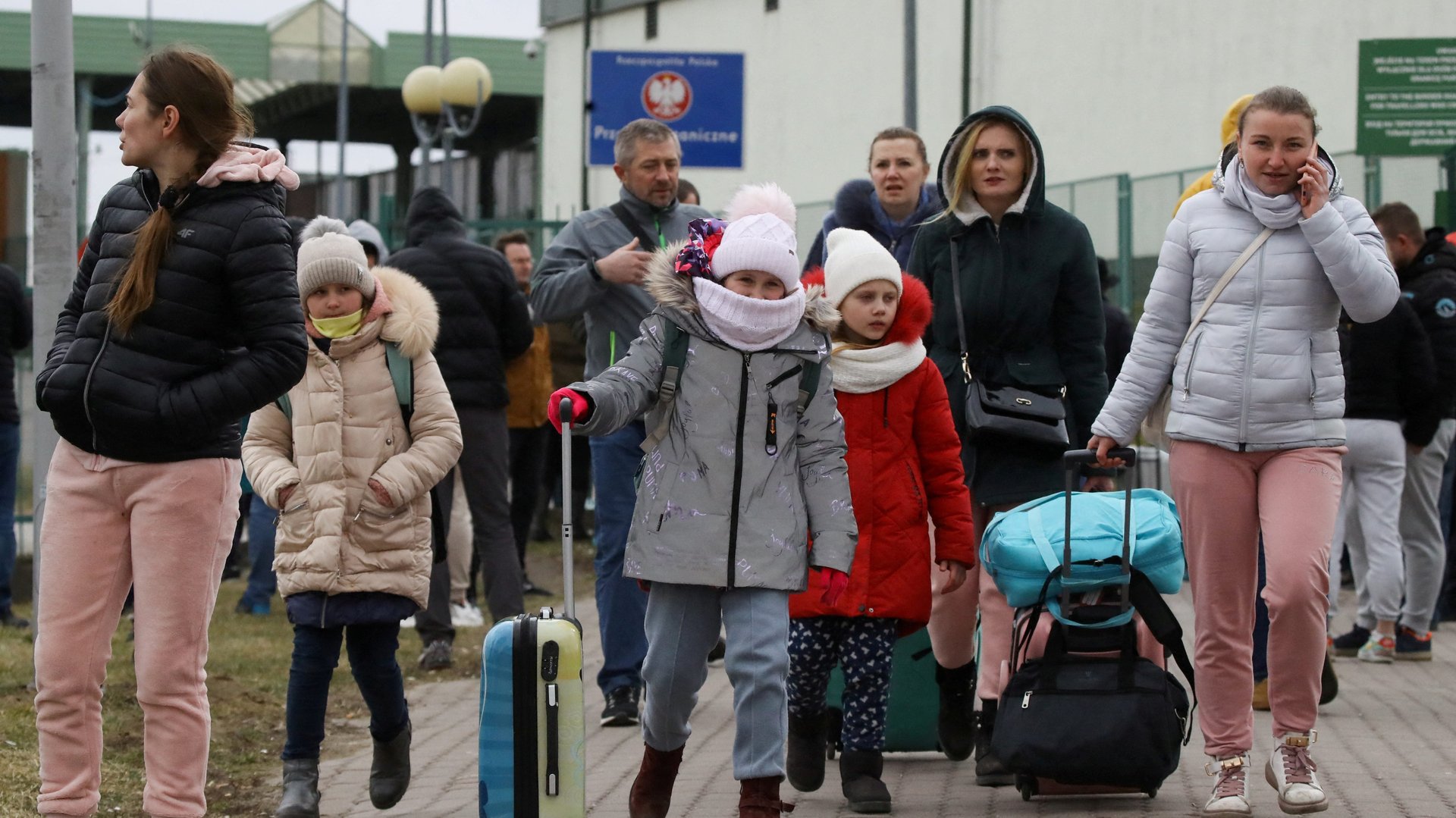Who will take in Ukraine’s refugees?
The Russia-Ukraine conflict is on the precipice of triggering a refugee crisis, as hundreds of thousands of Ukrainians are fleeing their home country in search of safety.


The Russia-Ukraine conflict is on the precipice of triggering a refugee crisis, as hundreds of thousands of Ukrainians are fleeing their home country in search of safety.
One million Ukrainians have left the country in the days since president Vladimir Putin ordered an invasion early on Feb. 24, according to the UN refugee agency. Many have fled to nearby Poland, Hungary, Moldova, and Romania.
Poland preparing to accept 1 million refugees
In recent days Poland’s interior minister has said it’s preparing for as many as 1 million refugees to arrive from Ukraine. The country already has strong ties with its neighbor—Ukrainians were granted over 600,000 residence permits for the first time to work and study in the EU in 2020, and 81% of them came from Poland. It’s estimated that as many as 2 million Ukrainians live in Poland, many of whom fled their home country after Russia annexed Crimea in 2014.
Poland has at times pointed to its acceptance of Ukrainian migrants as a way to deflect from its otherwise hostile immigration policies. When finance minister Mateusz Morawiecki was asked about the country’s reluctance to welcome Muslim refugees fleeing conflict back in 2017, he cited the fact that his country had taken in more than 1 million Ukrainians. But Poland still remains an unwelcoming place for many migrants and refugees, as is evidenced by the hundreds that were pushed back from the Belarus border in November.
Other nearby countries preparing to take in Ukrainians include Romania, which has said it could accept up to 500,000, as well as Slovakia, and the Czech Republic.
What makes the Russia-Ukraine crisis different from 2015
The prospect of millions of refugees fleeing into the EU evokes images from 2015, when 1.3 million migrants fled to Europe from war-torn countries in the Middle East and Africa. But this crisis already looks different in a few ways, says Kate Hooper, a policy analyst at the Migration Policy Institute. For one thing, central and eastern European countries’ willingness to take in large numbers of their Ukrainian neighbors stands “in sharp contrast to their reluctance to accept refugees” during the 2015 crisis.
Additionally, Ukrainians are free to enter EU countries without a visa since 2017, which makes it easier to seek safety in neighboring countries. EU interior ministers are also considering triggering a never-before-used law that would allow Ukrainians to enter EU member states for three years without formally applying for asylum.
But despite a seemingly more welcoming environment, some European countries may simply not be able to scale up their capacity to receive, process, and assist new arrivals if 1 to 5 million Ukrainians flee, as some humanitarian agencies have estimated. If that estimate bears out, “it’s likely that the European Union and international agencies will need to provide support to these frontline states,” Hooper says.